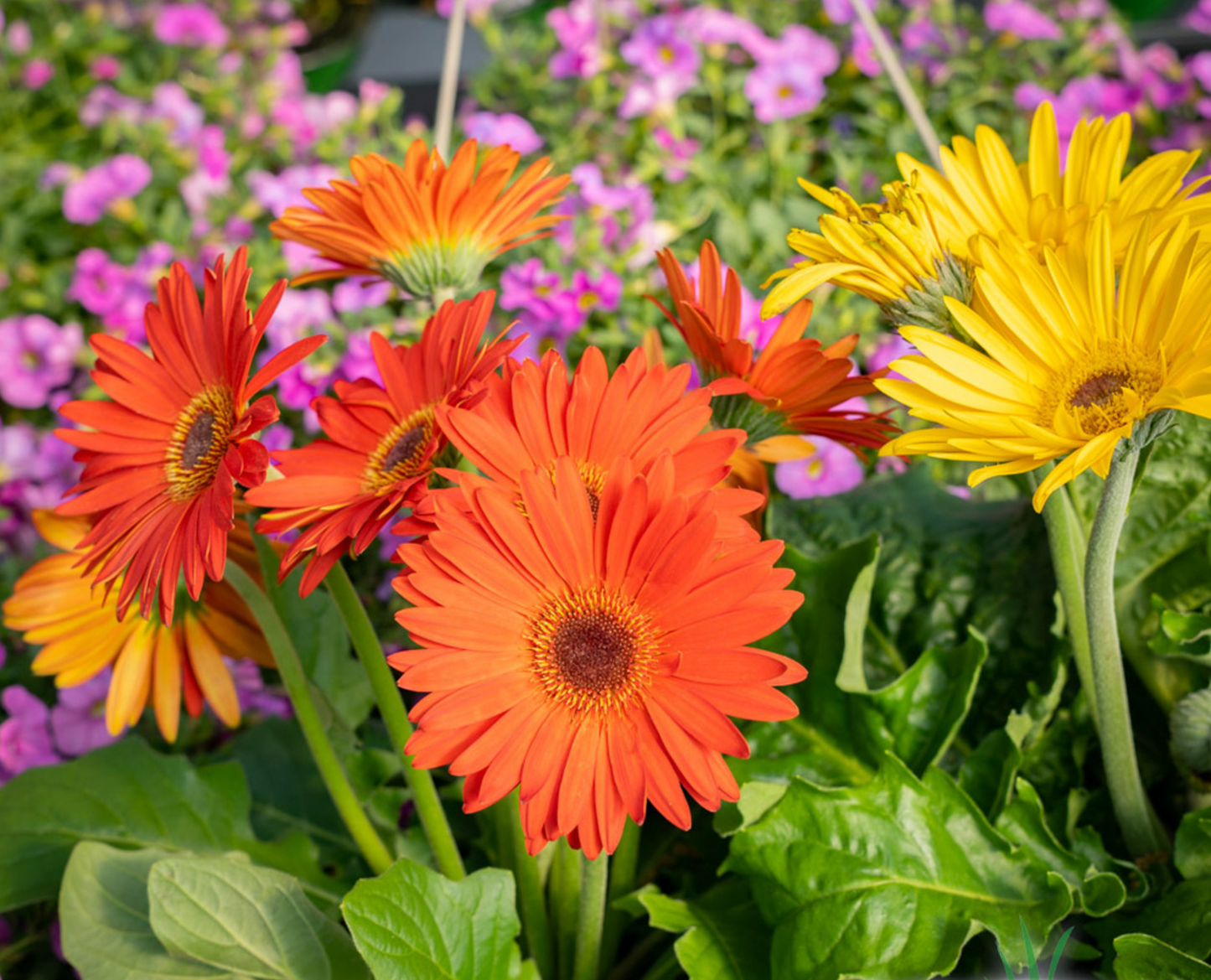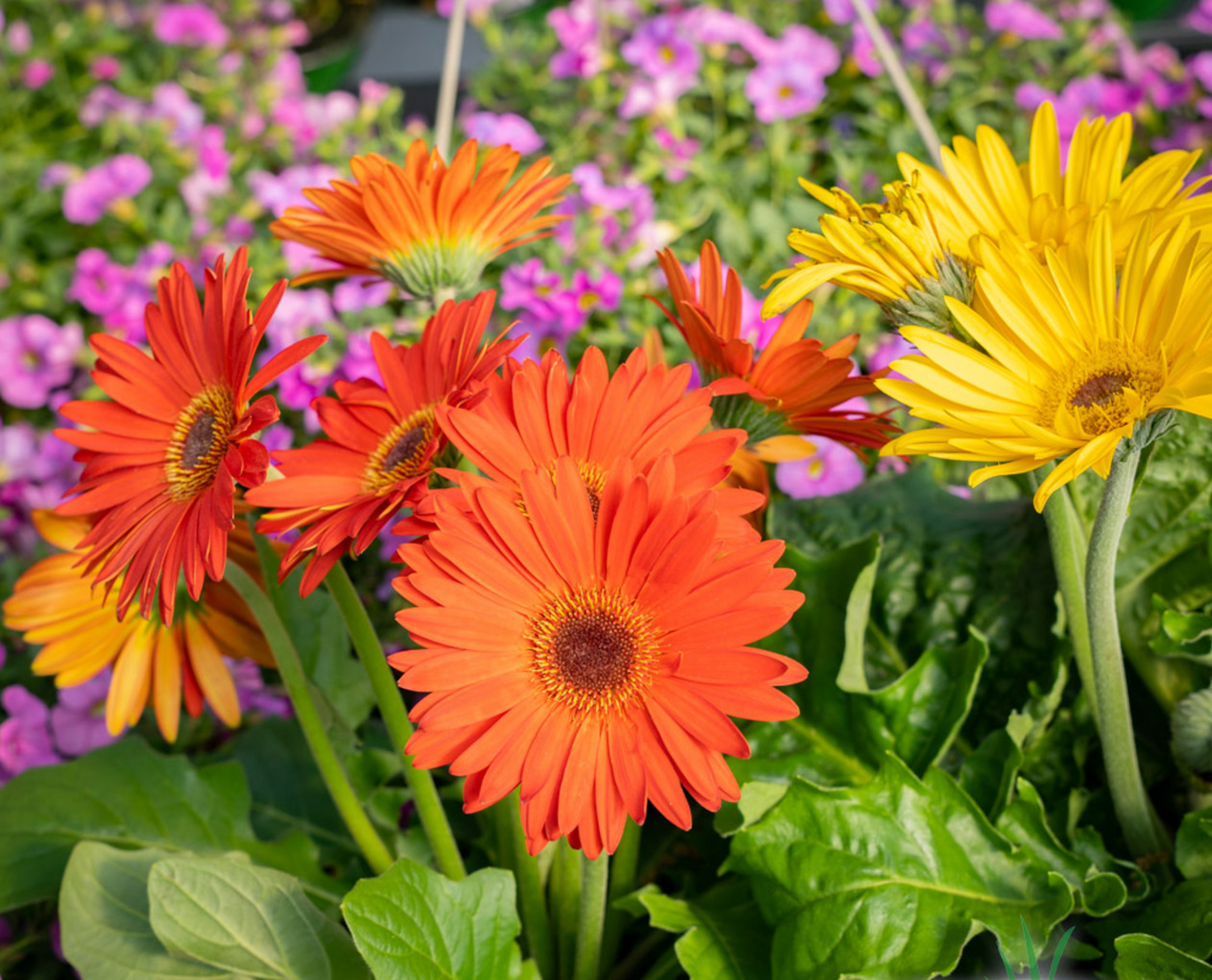6" Gerber Daisy
6" Gerber Daisy
Couldn't load pickup availability
-
Gerbera daisies (Gerbera jamesonii) are popular flowering plants known for their large, colorful, and daisy-like blooms. They are widely used in gardens, floral arrangements, and as potted plants. Here are some key features and care tips for Gerbera daisies:
-
Flowers: Gerbera daisies are known for their large, vibrant flowers with a central disk surrounded by colorful petals. The flowers come in a wide range of colors, including shades of pink, red, orange, yellow, and white. The central disk can be dark or light, contrasting with the petal color.
-
Foliage: The leaves of Gerbera daisies are typically basal, forming a rosette at the base of the plant. The leaves are lobed and can be hairy or smooth, depending on the variety.
-
Size: Gerbera daisies can vary in size, but they generally reach a height of 10 to 18 inches, with a similar spread.
-
Sunlight Requirements: Gerbera daisies prefer full sun to partial shade. In regions with hot climates, they benefit from some afternoon shade to protect them from intense sunlight.
-
Soil and Drainage: Well-draining soil is crucial for Gerbera daisies. They prefer slightly acidic to neutral soil. Good drainage helps prevent root rot and other issues.
-
Watering: Gerbera daisies like consistent moisture but can be sensitive to overwatering. Water the plants when the soil surface feels dry, and avoid allowing the soil to become waterlogged.
-
Temperature: Gerbera daisies thrive in temperatures between 65°F to 75°F (18°C to 24°C). They can be grown as perennials in mild climates but are often treated as annuals in colder regions.
-
Fertilization: Regular feeding with a balanced liquid fertilizer during the growing season (spring and summer) can promote healthy growth and flowering. Follow the recommendations on the fertilizer packaging.
-
Deadheading: Remove spent flowers to encourage continuous blooming. Deadheading also helps redirect energy to the production of new flowers.
-
Pests and Diseases: Keep an eye out for common pests like aphids and spider mites. Proper spacing and good air circulation can help prevent fungal diseases.
-
Container Gardening: Gerbera daisies can be grown in containers, making them suitable for patios and balconies. Ensure that the pots have drainage holes to prevent waterlogging.
-
Landscape Use: Gerbera daisies are often used in flower beds, borders, and mixed perennial gardens. Their vibrant colors make them excellent cut flowers for bouquets and arrangements.
Gerbera daisies are valued for their cheerful and colorful blooms, making them popular choices for adding a burst of color to gardens and floral displays. With proper care and attention to their specific needs, these flowers can provide months of enjoyment.
-
Share


